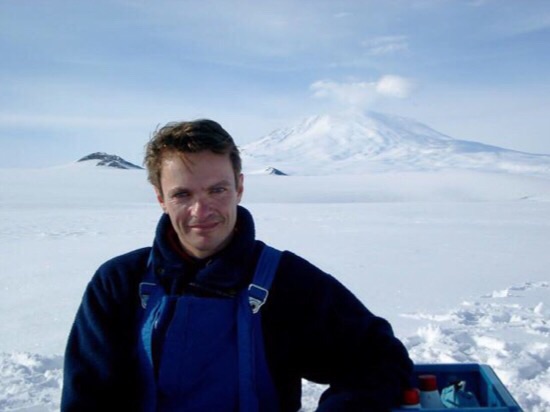GOVERNMENT
Integrating past warm climate data, scientists hone future sea-level rise predictions

UMass Amherst climate scientist, international team, usher in new era of climate modeling
In a recent review of the science on past sea-level rise and climate change, climate scientists including Robert DeConto of the University of Massachusetts Amherst survey modeling and other methods used to reconstruct past sea levels and say we are verging on a new era of understanding how quickly the Greenland and Antarctic ice sheets may respond to warming, and what rates of sea-level change might accompany such change.
Writing in the current issue of Science, DeConto and colleagues at several United States and European universities examine how understanding ice sheet response during past warm periods is evolving as researchers in different disciplines integrate their findings. In particular, they consider evidence of ancient sea level and ice sheet reconstructions in various models and review the state of knowledge of the magnitudes, rates and sources of sea-level rise during several of the most prominent interglacial peaks of the last 3 million years.
"Improving our understanding of individual polar ice sheet contributions to global mean sea level is a key challenge," the authors point out. "An important uncertainty for future projections of the Greenland ice sheet is the threshold temperature beyond which it undergoes irreversible retreat, with current estimates ranging from 1 to 4 degrees C. above pre-industrial temperatures."
Because they show that this threshold is similar to observed temperatures in the past, they add, "improved estimates of Greenland ice sheet loss for a given local or global temperature increase during past warm periods will thus provide a critical constraint on this threshold."
"For the Antarctic ice sheet, the key challenge involves determining which marine-based sectors of the ice sheet are most vulnerable to collapse and identifying the forcing (atmospheric or oceanic) that would trigger such events," DeConto and colleagues add. He clarifies that this applies to the parts of the ice sheet resting on bedrock below sea level. Forcing refers to the effects of a warming atmosphere versus ocean on the ice sheet.
The authors say reconstructing past ice sheet mass loss and forcings "will be of particular value for validation of coupled ice sheet-climate models" used to predict the future fate of polar ice sheets.
One of the world's leading Antarctic climate researchers, DeConto notes that melting of the Antarctic Ice Sheet now poses the single greatest threat to shorelines and coastal cities globally because it is estimated to contain more than 160 feet (50 meters) of equivalent sea level.
His earlier research has shown that emerging geological records imply surprising sensitivity of the ice sheet, with serious implications for its future response to climate and ocean warming. Recent observations show accelerating retreat of some major outlet glaciers, especially in West Antarctica where the bed of the ice sheet lies hundreds of meters below sea level, hinting that a massive runaway ice-retreat may be already underway.
